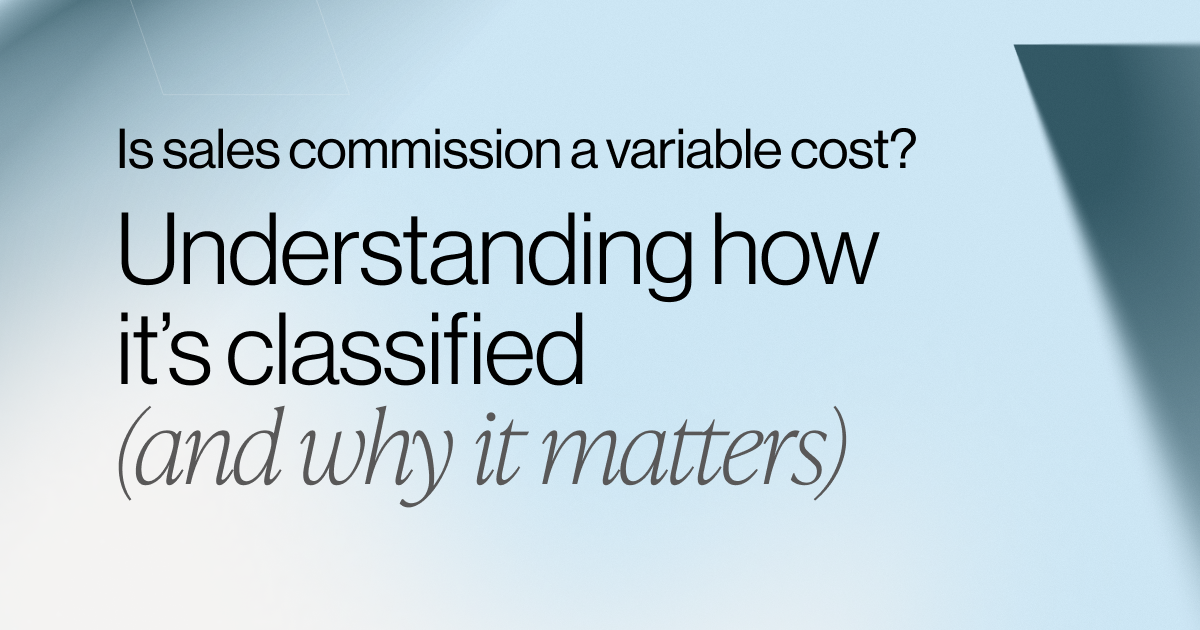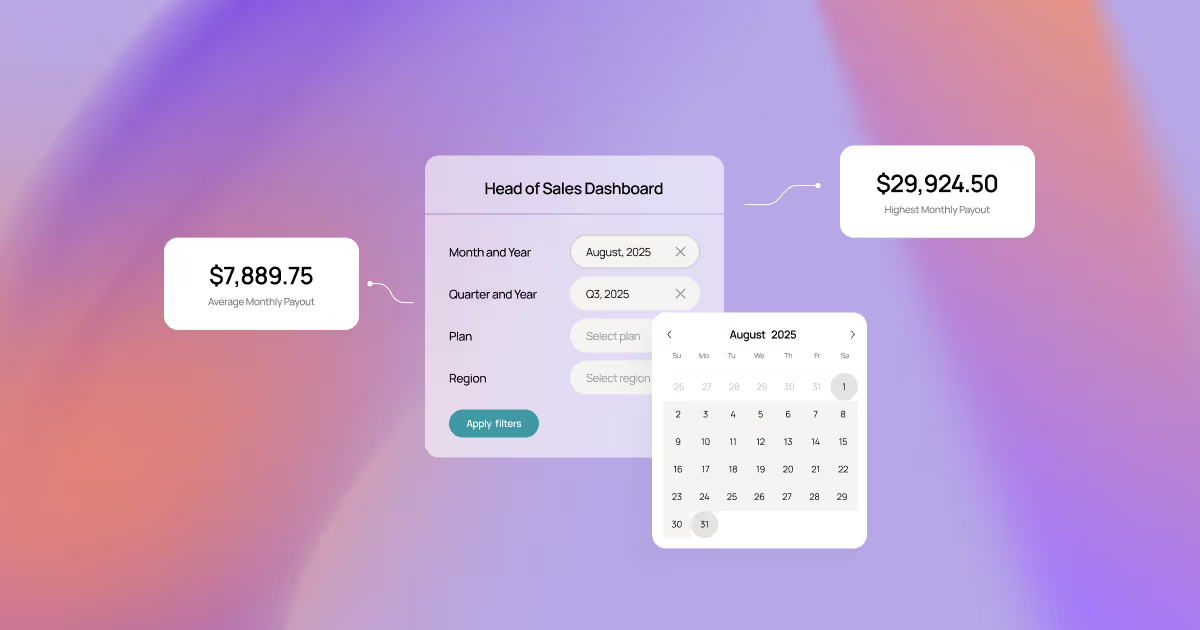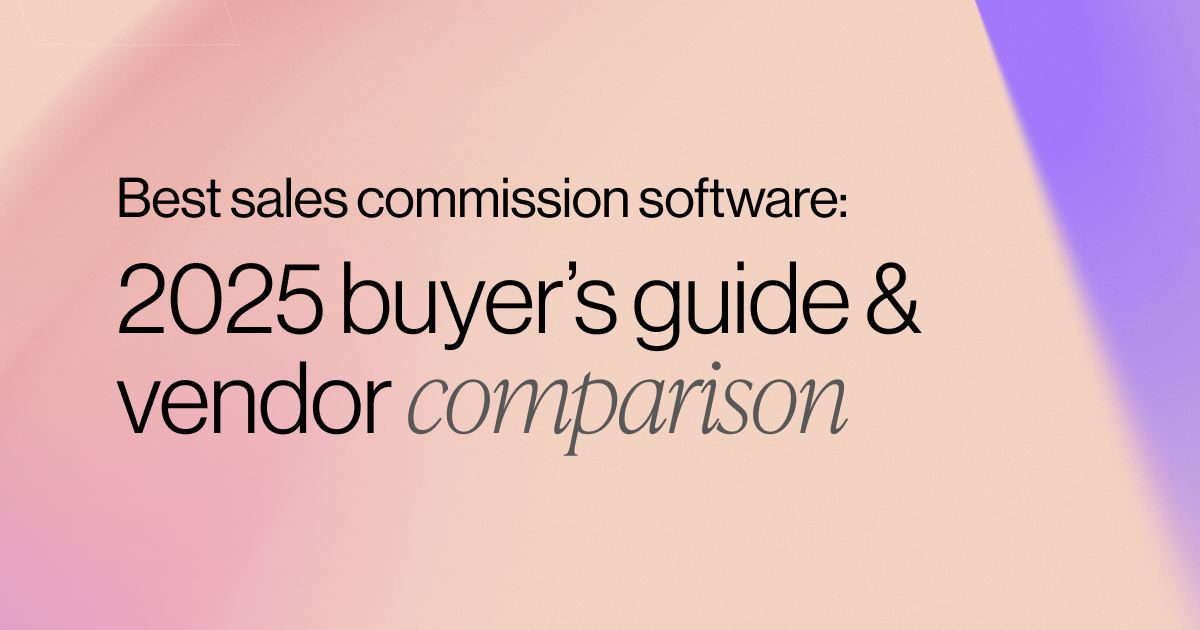There's Never Been a Better Time to Develop High-ROI Sales Compensation Plans
A guest post by Anil Chouhan, Manager, Production Solutions at CaptivateIQ. Anil is a business outcome-focused technology professional with over 20 years of experience. Early in his career, he helped design, implement, and manage incentive compensation and analytics solutions for Fortune 500 companies. He currently specializes in Sales Performance Management, creating innovative technology approaches to make systems agile and empower finance and sales operations administrators.
In growing companies, the cost of employees, specifically the sales team, is very high. In good times, companies invest a lot of money in building and motivating the sales team. However, in these times, they may not pay fine-tuned attention to the business ROI on this investment — specifically in designing a high ROI sales compensation plan.
Building a high ROI sales compensation plan isn’t just a nice-to-have in volatile times. It’s an imperative.
But, what does it mean to have a high ROI sales compensation plan? Is it about motivating the salespeople to sell more? Is it about setting aggressive goals? Or is it about keeping the plans simple and tying them strongly to dollars brought in?
While each of the above questions has relevance in the design process, none are the key drivers by themself. What really matters is how well-aligned and agile your plan design and management are. So let’s talk about alignment first.
Alignment: The Foundation of High ROI Plans
What are we aligning the plan with? It starts with the business and go-to-market (GTM) strategy. The alignment process begins with asking these critical questions:
- What customer segments do you want to grow? By how much?
- Which products are strategic to your business?
- How does each sales role contribute to the strategy?
- What behaviors do we need to motivate at every stage in our sales process for each role?
- Is it about revenue or profitability or both?
- Is it about first booking or retention and upsells or both?
- What is the correlation between efforts, results, and strategic value in each segment with a particular product mix?
- When does the organization get the true value of the business sold?
- What type of business is detrimental to the business?
To achieve alignment, each role’s plan needs to be based on factors they control and influence. Here are four recommendations for creating high alignment — and hence ROI.
- Include more downstream factors
- Don’t be scared of gates, qualifiers, and thresholds
- Play with the goal setting and measurement periods
- Design for full alignment then simplify
Let’s dig into each.
Include more downstream factors
If the downstream impact of a deal is important to the company’s success, then there should be some measurement of that included in the sales compensation plan. The reality is all sales and all customers are not equal — and some are outright wrong for your business. And your sales team knows it. If we tie them only to their production numbers, they will ignore the factors they are aware of that impact the company’s long-term goals. In general, there is a significant trend toward including multiple measurements that are beyond the initial sale or booking. These include invoicing, payments, margins, strategic mix, and profitability of the business sold.
Often this means that BDRs are not just compensated for their activity, but also for the success factors downstream, such as the number of Stage 1 and Stage 2 deals they are part of and the value of the deals generated by them that close. Sales executives are not just compensated on bookings but on invoicing, payments, and profitability of the business they bring in.
Don’t be scared of gates, qualifiers, and thresholds
Your GTM strategy is not designed by “spray and pray,” and your sales compensation plans shouldn’t be either. If new product goals are important — though lower in volume — be sure to give them the prominence they need. You can use a qualifier. For example, a salesperson only receives the acceleration if they meet some base level of certain product goals.
Also, don’t be afraid to start paying only after a certain level of performance is achieved. After all, it is a sales compensation plan that is supposed to have high leverage both on the downside and the upside.
Play with the goal setting and measurement periods
If you are in a volatile industry or volatile environment, you might want to consider setting goals for a shorter period of time. This allows you to align your plan more quickly. While many years ago, companies set goals on an annual basis, it is not uncommon to see half-yearly sales team goals and often even quarterly goals.
Design for Full Alignment, then simplify
Often companies will try to keep the plans simple from the get-go. They will avoid factors, measurements, and complexities in the plan because of a lack of data infrastructure, flexible sales compensation tools, or simply the fear of resistance from the sales team. These factors are things that should be addressed by themself. At the same time, once the high-level structure of the plan is designed, some aspects can be simplified if they are not adding a lot of value and are not critical to the alignment of the strategy.
Agility: Where the Rubber Meets the Road
The story surely does not end with a good plan design. Even the best plans need frequent assessment and tweaking. That’s where agility comes into play. And the agility I speak of is not just of the plan but also of the systems that administer the plan, and the system's ability to provide plan analytics.
The critical question now is: is the plan working as intended? Are we paying for the right performance? Are the company’s strategic goals being met? Is the distribution of performance and earnings within the sales team as expected? Are too many people meeting the quota? Are too few people meeting their quotas? Is there an alignment between the results the company wants and the payouts being made?
To answer these questions, you need to have Plan Effectiveness Analytics designed upfront and run with every payout cycle. Your rev ops team needs not to just administer the plan, but also, design a process by which you can frequently assess how the plan is working against the strategic goals laid out at the start. Build a mechanism to adjust, and tweak the plan with levers such as rates, accelerators, gates, and so on to bring it back in alignment.
Plan Effectiveness Analytics
Various kinds of analysis can be performed at the end of each payment cycle to understand how your plans are working. Here are some you might want to consider:
- Commissions vs. dollar goal attainment by producing roles: The goal here is to identify the commission cost of producing sales.
- Distribution of commissions: This type of analysis lets you identify outliers and understand if the “differentiation of pay vs. performance” is working well or not.
- Strategic product/segment growth: This measures if specific strategic goals are being met.
- Quota achievement report as well distribution: This analysis helps refine the quota setting process.
The key point to note is that plan effectiveness measurement should be an integral part of the initial plan design. How you measure effectiveness falls out of the initial goals and the performance measurements you chose to meet those goals.
It All Boils Down to Alignment
Designing High-ROI plans requires significant effort in creating alignment between the company go-to-market strategy and the performance measurements used for the sales compensation plans. Aim to create a tight alignment between the two. Also, make sure your systems are capable of handling the complexity and effort that this requires.
.svg)








